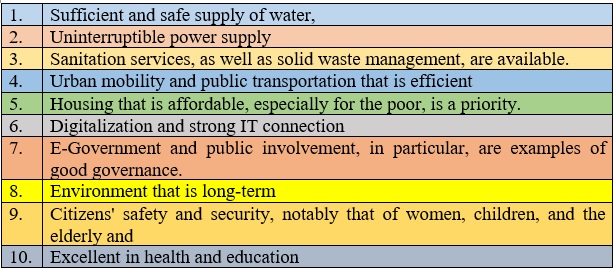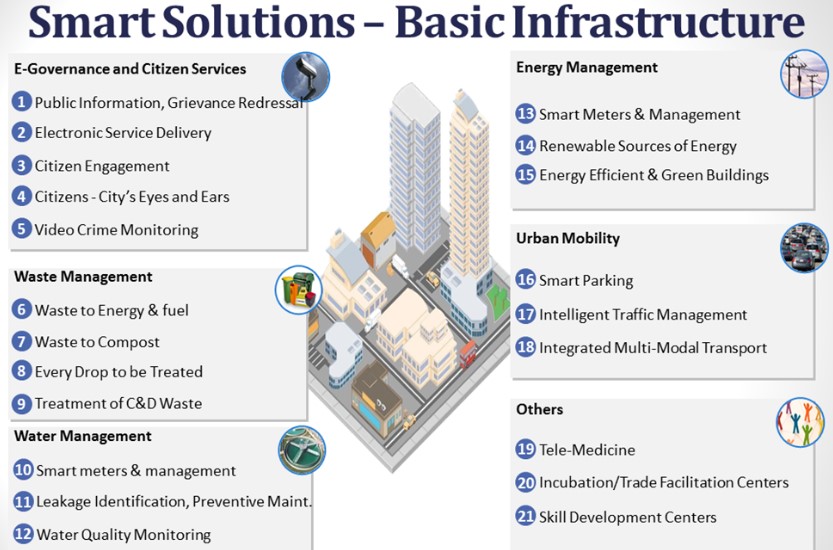In India, a smart city has a different meaning than, instance, in Europe. Even in India, a smart city means different things to different people, and its definition varies from city to city, state to state, and region to region, based on the city’s degree of development, readiness to change and reform, resources, and goals. There is no one description that can represent the different conceptualizations of city dwellers, particularly in the distinctive Indian culture, which employs dynamic, diversified, and contextual principles.The Bachelor of Technology in Smart Cities and the Master of Technology in Smart Cities and Management have been announced by Sushant University. While designing the course curriculum for both programmes, the School of Engineering and Technology, at Sushant University, top university in north India for engineering had all of the verticals of smart cities in mind. Sushant University offers all of the essential disciplines, as well as software and labs.
To meet people’ expectations and demands, urban planners should strive to build all aspects of the institutional, physical, social, and economic infrastructure. This can be a long-term objective, and cities might strive toward it by layering on layers of “smartness.” The Mission smart cities is made of many levels such as:
Primary layer.

Second layer
It entails the use of smart solutions to improve infrastructure and services. This is done at the citywide (pan-city) level, and below shows an example of smart solutions. Smart solutions applied to current infrastructure and services are projected to:
(1) extract greater output from existing assets and resources.
(2) utilize less resources to produce the same output.
(3) enhance governance and public service delivery.

Thread levels
As well as their constituents, are complimentary and overlap, and can be depicted as three layers within a triangle. The supply of core infrastructure to support the basic requirements of all city residents, particularly the poor and disadvantaged, is the fundamental building block. Then, in order to enhance the lives of all its citizens, smart solutions are applied to fundamental infrastructure and services. Area-based development is at the top, in which areas are made more livable for example, building walkable neighborhoods, fostering mixed land use and a range of transportation alternatives, providing affordable housing for everybody, and preserving/developing open spaces. In a nutshell, India Smart Cities Mission promotes the notion and practice of integrated planning.
Between 2019 and 2023, the government has chosen 100 cities for area-based and pan-city development. For area-based smart city development, the following three models were used:
1. Retrofitting
This comprises establishing solid infrastructure service levels and multiple smart applications in an existing built-up region (>500 acres).
2. Redevelopment
This comprises removing the existing built-up area (>50 acres) and enabling for the co-creation of a new plan employing integrated land and greater density. The SaifeeBurhani Upliftment Project in Mumbai (the Bhendi Bazaar Project), for example, and the rebuilding of East Kidwai Nagar in New Delhi are two examples (undertaken by the National Building Construction Corporation).
3. Greenfield
This comprises employing creative planning, funding, and implementation techniques (e.g., land pooling/reconstitution) to execute smart solutions in a previously unoccupied region (>250 acres) with affordable housing provision. Take, for example, Gujarat’s GIFT City.
Investment
The ‘Smart City Mission’ would receive a total investment of Rs. 205,018 crore (US$ 28.31 billion) by 2020. As of 2020, 5,331 projects totaling Rs. 176,059 crore (US$ 24.31 billion) had been tendered, accounting for 86 percent of total investments. As of 2020, work orders for 4,540 projects costing Rs. 139,969 crore (US$ 19.33 billion) had been issued, accounting for 68 percent of the total, while 2,122 projects worth Rs. 34,986 crore (US$ 4.83 billion) had been completed, accounting for 17 percent of the total.
Finding
By 2030, urban regions are predicted to house 40% of India’s population and generate 75% of the country’s GDP. The Smart Cities Mission is an urban city development programme in India. The government is putting innovative goods and ideas to the test as part of numerous programmes in order to efficiently execute ‘Smart Cities.’ For efficient project planning and execution, initiatives like the Smart Cities Forum bring together collaborative perspectives from all key sectors. In addition, private-sector companies are cooperating with cities to produce innovative goods and services that address local requirements.
Prof. Shadab Alam
School of Engineering and Technologies
Sushant University
Gurugram
